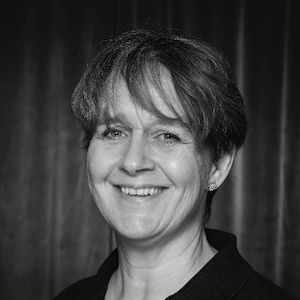Using Ray Diagrams (Edexcel A Level Physics) : Revision Note
Using Ray Diagrams
Describing images formed by lenses
Images are described using three concepts
They are either:
Real or virtual
Bigger than, the same size as or smaller than the object
Inverted or the same way up as the object
A real image is one formed by the convergence of rays of light (the rays meet)
A real image can be projected onto a screen
A virtual image is seen but not formed on a screen
The rays of light have not met, they have been perceived by the eye
An image viewed through a magnifying glass is a virtual image
Lenses can be used to form images of objects placed in front of them
The location (and nature) of the image can be found by drawing a ray diagram:

Diagram showing the formation of a real image by a lens
Drawing a Ray Diagram
Start by drawing a ray going from the top of the object through the centre of the lens. This ray will continue to travel in a straight line
Next draw a ray going from the top of the object, travelling parallel to the axis to the lens. When this ray emerges from the lens it will travel directly towards the principal focus
The image is found at the point where the two rays meet
The above diagram shows the image that is formed when the object is placed at a distance between one focal length (f) and two focal lengths (2f) from the lens
In this case, the image is:
Real
Enlarged
Inverted
The following diagram shows what happens when the object is more distanced – further than twice the focal length (2f) from the lens:

Diagram showing the formation of a real image by a lens with the object at distance
In this case the image is:
Real
Diminished (smaller)
Inverted
If the object is placed at exactly twice the focal length (2f) from the lens:

Diagram showing the formation of a real image with the object at 2f
In this case the image is:
Real
Same size as the object
Inverted
Magnifying glasses
If the object is placed closer to the lens than the focal length, the emerging rays diverge and a virtual image is formed
When viewed from the right-hand side of the lens, the emerging rays appear to come from a point on the left. This point can be found by extending the rays backwards (creating virtual rays)
A virtual image will be seen at the point where these virtual rays cross

A virtual image is formed by the divergence of rays from a point
In this case the image is:
Virtual
Enlarged
Upright
Using a lens in this way allows it to be used as a magnifying glass
When using a magnifying glass, the lens should always be held close to the object
Examiner Tips and Tricks
It is important to understand how the images are formed in both examples, as well as the type of image formed. You should practice drawing accurate lens diagrams. They are harder than they look!

You've read 0 of your 5 free revision notes this week
Sign up now. It’s free!
Did this page help you?
